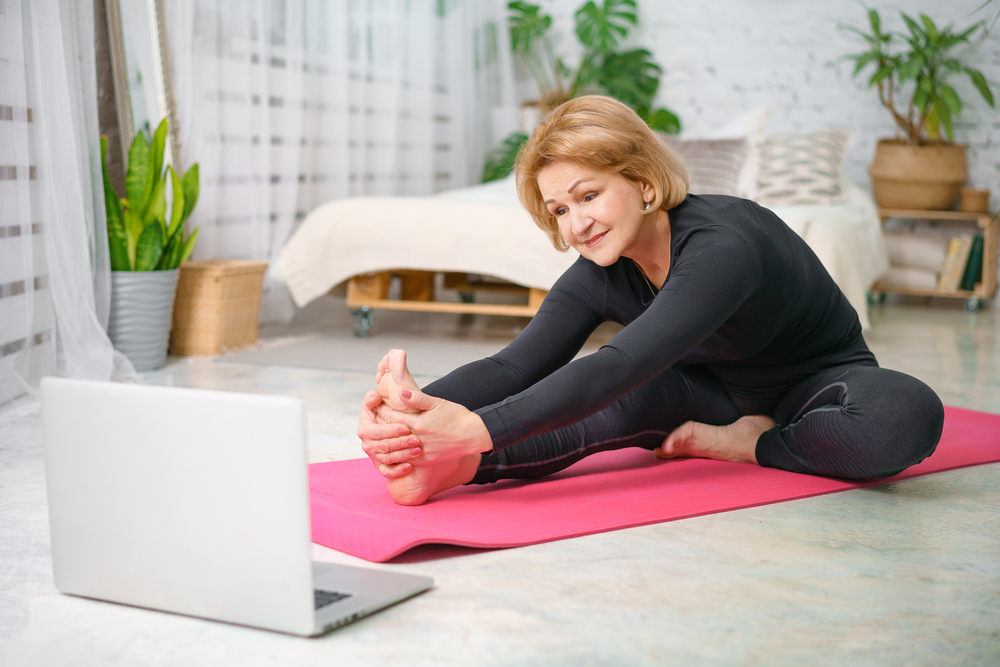
The COVID-19 pandemic is having a huge impact on the mental health of the general population, both due to the spread of the pandemic and the necessary restrictions in the general population as well as in specific groups (Pappa et al, 2020; Rogers et al, 2020; Luo et al, 2020). For instance, the prevalence of anxiety and depression in COVID-19 times, has been estimated to be around 30% across over 60 studies published so far (Luo et al, 2020).
It is therefore paramount that we identify protective factors, strategies and behaviours that minimise the onset of depression or anxiety in healthy individuals, or worsening of existing mental disorders during the COVID-19 pandemic, in particular during stricter restrictions. If we can help people stay mentally healthy during these challenging times, they will be much better placed to cope with the long recovery we all face as societies following this pandemic.
Exercise and physical activity are excellent candidates for protective factors. There is a solid amount of high quality evidence that shows the efficacy of exercise across a number of different mental conditions, both as an intervention that can prevent mental illness and also as a treament (Ashdown-Franks et al, 2020). Of course, exercise becomes more difficult when lockdowns are enforced and we all have to spend more time at home, but there are still activities we can all do to stay physically active.

We know that exercise can prevent and treatment mental illness, so what should we all be doing now during this latest COVID lockdown to stay physically and mentally healthy?
Methods
A short communication, recently published in the Journal of Affective Disorders by Rowan Diamond and Erin Byrd, provides evidence-based tips on how to reduce sedentary behaviour during COVID-19 isolation (Diamond and Byrd, 2020).
The authors pool evidence-based recommendations from studies conducted before the pandemic, and adapt or tailor them for the specific restrictions that are set during this lockdown period.
Results
The authors identified seven strategies/actions that can be helpful to reducing sedentary behaviour during lockdown:
- Use external cueing: alarms, wearable devices or apps that remind us to interrupt prolonged sedentary behaviour, e.g. while working or using screens
- “Walk and talk”: merge daily activities with physical activity, e.g. listen to an audio-book or make calls while walking
- Do things standing or walking vs sitting whenever possible, and do gentle movement (e.g. stretching) when you’re waiting to do something
- Replace sedentary behaviours with anything else, even just standing
- Use standing desks for work, and if possible, standing workstations if you have to work from home
- Restructure your domestic environment: target areas where the worse sedentary behaviour occurs, replace objects and sitting spots with activity-promoting cues
- Invite others to join you: team up with friends and relatives and introduce some fun – it makes things easier!
The authors make a simple, but very relevant and useful contribution to promote mental and physical health during the COVID-19 pandemic and this second UK, which begins today.

Plato said, over 2,000 years ago “lack of activity destroys the good condition of every human being while movement and methodical physical exercise save it and preserve it”.
Conclusions
Several approaches are available and adaptable to our home environments that can help us to reduce sedentary behaviour and stay fit during the pandemic. Teaming up with friends and others will make things easier.
Importantly, ongoing studies such as COH-FIT have the potential to show which exercise and physical activity outcomes are important, and what population subjectively think of different activities as coping strategies to prevent and treat mental ill health.
Strengths and limitations
Strength
- This short communication provides pragmatic advice to reduce sedentary behaviour.
Limitations
- The paper is short and to the point (which is a strength), so does not go into detail about different approaches to reducing sedentary behaviour for different populations. Clearly, the advice given is relevant to many people, but may need to be adapted for those with special needs, e.g. the elderly, physically disabled etc.
- Large global studies accounting for confounding factors such as COH-FIT are needed for a complex and deep understanding of how to cope with the pandemic, to ultimately improve health and functioning.
Implications for practice
Walk and talk, re-structure your home working set up, and team up with friends: this could reduce sedentary behaviour during lockdown. It’s worth a try!

Walk and talk, re-structure your home working set up, and team up with friends: this could reduce sedentary behaviour during lockdown. It’s worth a try!
Join the COH-FIT study
The recommendations put forward by Diamond and Byrd (2020) will need to be supplemented with evidence gathered by several ongoing studies on the impact of COVID-19 pandemic, and on potential coping strategies.
Among many others, the Collaborative Outcomes study on Health and Functioning during Infection Times (COH-FIT – www.coh-fit.com) is probably the most international online survey of its kind in the world. COH-FIT is an online anonymous survey, available in 31 languages, adapted for adults, adolescents and kids, which aims to measure how the pandemic has impacted wellbeing, health, and functioning, and to identify which coping strategies are most useful to stay fit in the general population.
COH-FIT is cross-sectional at individual level, but is longitudinal at population level as it has been collecting responses since April 2020, and has so far collected over 108,000 responses, across over 140 countries, across six continents. COH-FIT is collecting “snowball” non-representative responses, as well as responses from a representative sample in many countries.
Among others, COH-FIT specifically asks about coping strategies, and physical activity levels during the pandemic. Importantly, COH-FIT is not leaving any minority groups behind, being available in 31 languages, any linguistic or ethnic minority can participate, in any country.
You can find out more about the COH-FIT study now. All participants will be able to improve their understanding about the impact that this pandemic is having on us, and how best to cope wherever we are across the globe.
Take the COH-FIT survey in English
Choose a different language to participate in COH-FIT
Statement of interests
Dr. Marco Solmi is co-PI of the COH-FIT study.
Links
Primary paper
Diamond R, Byrd E. (2020) Standing up for health – improving mental wellbeing during COVID-19 isolation by reducing sedentary behaviour. J Affect Disord. 2020;277:232. doi:10.1016/j.jad.2020.07.137
Other references
- Pappa S, Ntella V, Giannakas T, Giannakoulis VG, Papoutsi E, Katsaounou P. (2020) Prevalence of depression, anxiety, and insomnia among healthcare workers during the COVID-19 pandemic: A systematic review and meta-analysis. Brain Behav Immun. 2020;88:901-907. doi:10.1016/j.bbi.2020.05.026
- Rogers JP, Chesney E, Oliver D, et al. (2020) Psychiatric and neuropsychiatric presentations associated with severe coronavirus infections: a systematic review and meta-analysis with comparison to the COVID-19 pandemic. The Lancet Psychiatry. 2020;7(7):611-627. doi:10.1016/S2215-0366(20)30203-0
- Luo M, Guo L, Yu M, Wang H. (2020) The psychological and mental impact of coronavirus disease 2019 (COVID-19) on medical staff and general public – A systematic review and meta-analysis. Psychiatry Res. 2020;291:113190. doi:10.1016/j.psychres.2020.113190
- Ashdown-Franks G, Firth J, Carney R, et al. (2020) Exercise as Medicine for Mental and Substance Use Disorders: A Meta-review of the Benefits for Neuropsychiatric and Cognitive Outcomes. Sport Med. 2020. doi:10.1007/s40279-019-01187-6
